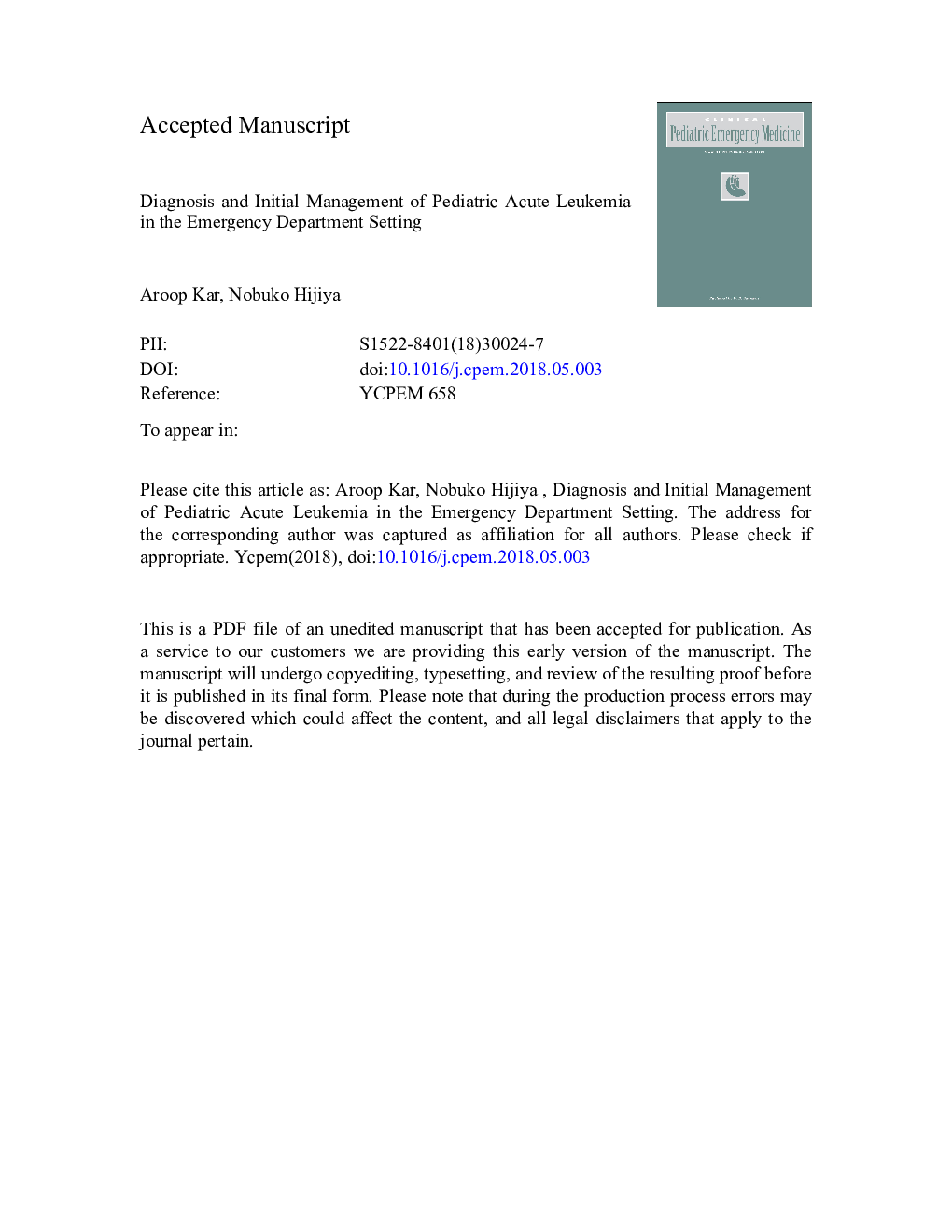| Article ID | Journal | Published Year | Pages | File Type |
|---|---|---|---|---|
| 8718298 | Clinical Pediatric Emergency Medicine | 2018 | 21 Pages |
Abstract
Acute leukemia is the most common pediatric malignancy and is generally associated with a favorable outcome. Nevertheless, the time of initial presentation is an especially vulnerable period for these patients, making the role of the frontline provider critical to prompt diagnosis and initiation of care. The diagnosis of acute leukemia can be challenging due to its nonspecific and heterogeneous clinical presentation and its tendency to mimic other more common and self-limited illnesses. There are, however, certain clinical, laboratory, and radiographic features which can collectively raise or lower suspicion for acute leukemia in the emergency department. Initial care must also involve screening for and managing associated acute complications such as tumor lysis syndrome, hyperleukocytosis, the presence of an anterior mediastinal mass, or fever, further emphasizing the essential responsibility of emergency care providers in this setting.
Keywords
Related Topics
Health Sciences
Medicine and Dentistry
Emergency Medicine
Authors
Aroop MD, Nobuko MD,
